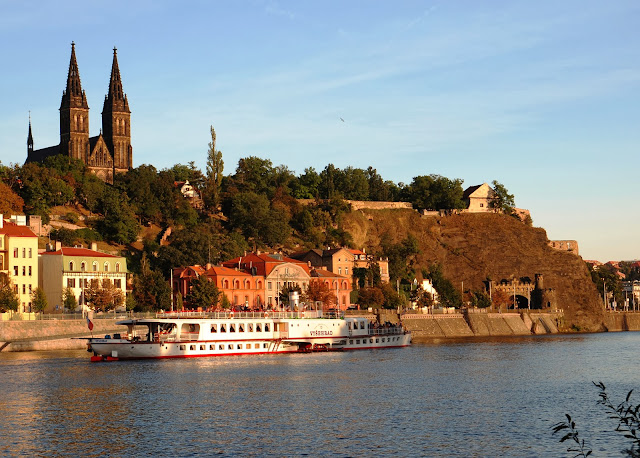Vyšehrad is a historical fort located in the city of Prague, Czech Republic. It was probably built in the 10th century, on a hill over the Vltava River. Situated within the castle is the Basilica of St Peter and St Paul, as well as the Vyšehrad Cemetery, containing the remains of many famous people from Czech history, among them Antonín Dvořák, Bedřich Smetana, Karel Čapek, and Alphonse Mucha. It also contains Prague's oldest surviving building, the Rotunda of St Martin from the 11th century. Local legend holds that Vyšehrad was the location of the first settlement which later became Prague, though thus far this claim remains unsubstantiated.
History
When the Přemyslid dynasty settled on the current site of Prague Castle, the two castles maintained opposing spheres of influence for approximately two centuries. Like this the second seat of the Czech sovereigns was established on a steep rock directly above the right bank of the Vltava river, in the 10th century.The zenith of Vyšehrad was during the second half of the 11th century, when Vratislav transferred his seat from Prague Castle, and the original fort was remodelled as a complex comprising a sovereign's palatial residence, church and seat of the chapter. The period of growth ended around 1140 when Prince Soběslav moved his seat back to Prague Castle. When Holy Roman Emperor Charles IV began to build the Prague Castle in its current dimensions in the early 14th century, the deteriorating castle Vyšehrad was abandoned as a royal home. Later the whole complex was renewed by Charles IV and new fortifications, with two gates and a royal palace were built, while the palace of Saints Peter and Paul awaited repair. At the beginning of the Hussite Wars, Vyšehrad was conquered and ransacked by the Hussites in 1420 and then again in 1448 by the troops of King George of Poděbrady. The castle was then abandoned and became ruined. It underwent a renovation in the 17th century, when the Habsburg Monarchy took over the Czech lands after the Thirty Years' War and remodelled it in 1654 as a Baroque fortress, turning it into a training centre for the Austrian Army, and later incorporated into the Baroque era city walls around Prague. The present form of Vyšehrad as a fortified residence, with powerful brick ramparts, bastions and the Tábor and Leopold gates, is a result of Baroque remodelling. The Cihelná brána (Brick gate) is an Empire-style structure, dating from 1841. The main part of the Špička Gate, parts of the Romanesque bridge, and the ruined Gothic lookout tower known as Libušina lázeň (Libuše's Bath) are the only fragments that have been preserved from the Middle Ages. The Romanesque rotunda of St. Martin dates from the second half of the 11th century. The 11th century of Church of Sts. Peter and Paul, which dominates Vyšehrad, was remodelled in the second half of the 14th century and again in 1885 and 1887 in the Neo-gothic style.Vyšehrad and the area around it became part of the capital city in 1883. The area is one of the cadastral districts of the city.
http://en.wikipedia.org/wiki/Vy%C5%A1ehrad
http://en.wikipedia.org/wiki/Vy%C5%A1ehrad

No comments :
Post a Comment